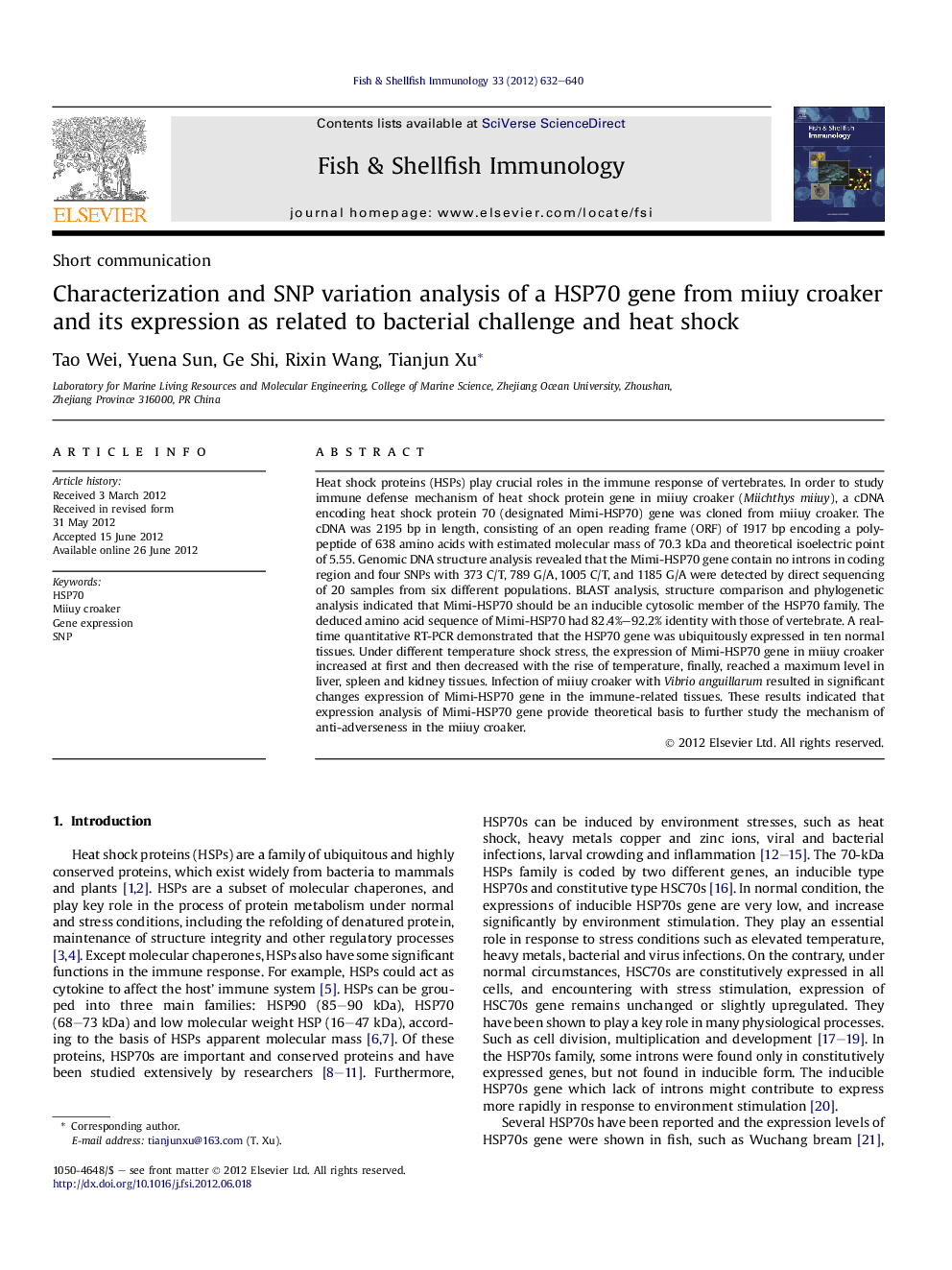| Article ID | Journal | Published Year | Pages | File Type |
|---|---|---|---|---|
| 2432055 | Fish & Shellfish Immunology | 2012 | 9 Pages |
Heat shock proteins (HSPs) play crucial roles in the immune response of vertebrates. In order to study immune defense mechanism of heat shock protein gene in miiuy croaker (Miichthys miiuy), a cDNA encoding heat shock protein 70 (designated Mimi-HSP70) gene was cloned from miiuy croaker. The cDNA was 2195 bp in length, consisting of an open reading frame (ORF) of 1917 bp encoding a polypeptide of 638 amino acids with estimated molecular mass of 70.3 kDa and theoretical isoelectric point of 5.55. Genomic DNA structure analysis revealed that the Mimi-HSP70 gene contain no introns in coding region and four SNPs with 373 C/T, 789 G/A, 1005 C/T, and 1185 G/A were detected by direct sequencing of 20 samples from six different populations. BLAST analysis, structure comparison and phylogenetic analysis indicated that Mimi-HSP70 should be an inducible cytosolic member of the HSP70 family. The deduced amino acid sequence of Mimi-HSP70 had 82.4%–92.2% identity with those of vertebrate. A real-time quantitative RT-PCR demonstrated that the HSP70 gene was ubiquitously expressed in ten normal tissues. Under different temperature shock stress, the expression of Mimi-HSP70 gene in miiuy croaker increased at first and then decreased with the rise of temperature, finally, reached a maximum level in liver, spleen and kidney tissues. Infection of miiuy croaker with Vibrio anguillarum resulted in significant changes expression of Mimi-HSP70 gene in the immune-related tissues. These results indicated that expression analysis of Mimi-HSP70 gene provide theoretical basis to further study the mechanism of anti-adverseness in the miiuy croaker.
► A complete HSP70 cDNA (Mimi-HSP70) was cloned from Miichthys miiuy. ► SNP variation sites were detected by genomic analysis from Miichthys miiuy. ► Expression levels of HSP70 were detected in organs exposed to heat shock environment. ► Expression levels of HSP70 were detected under bacterial infection in organs.
